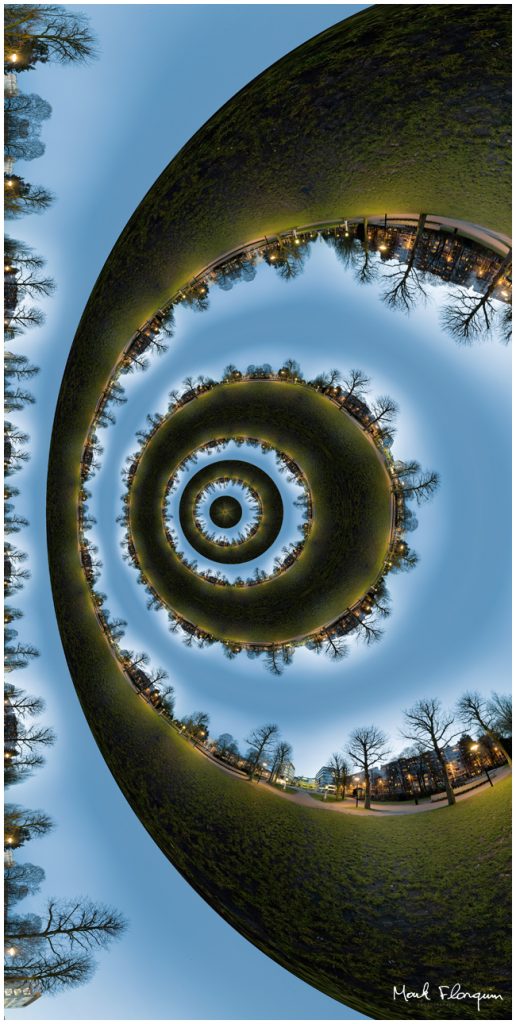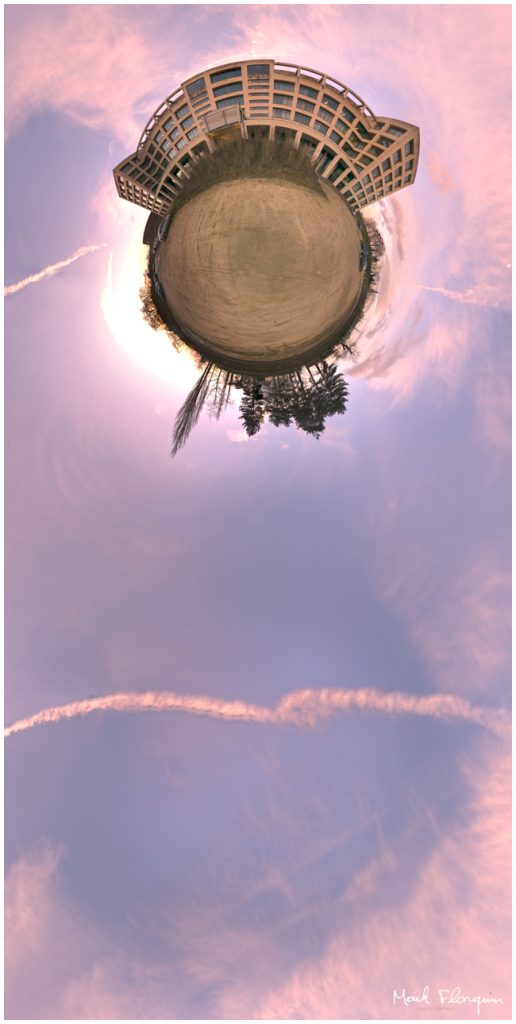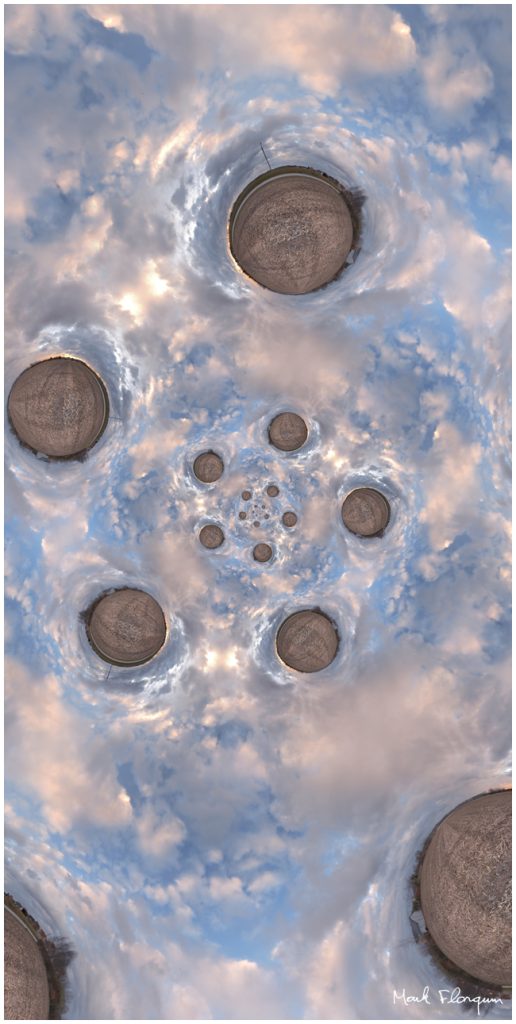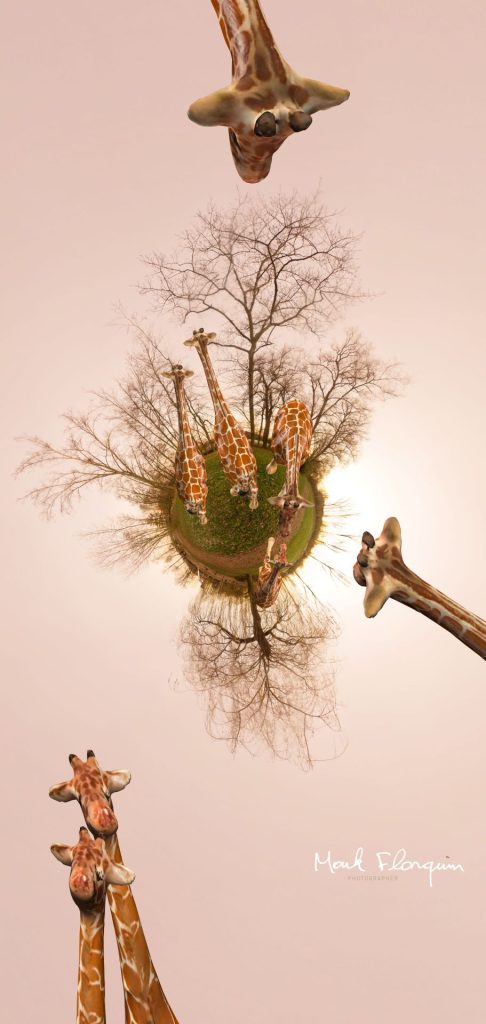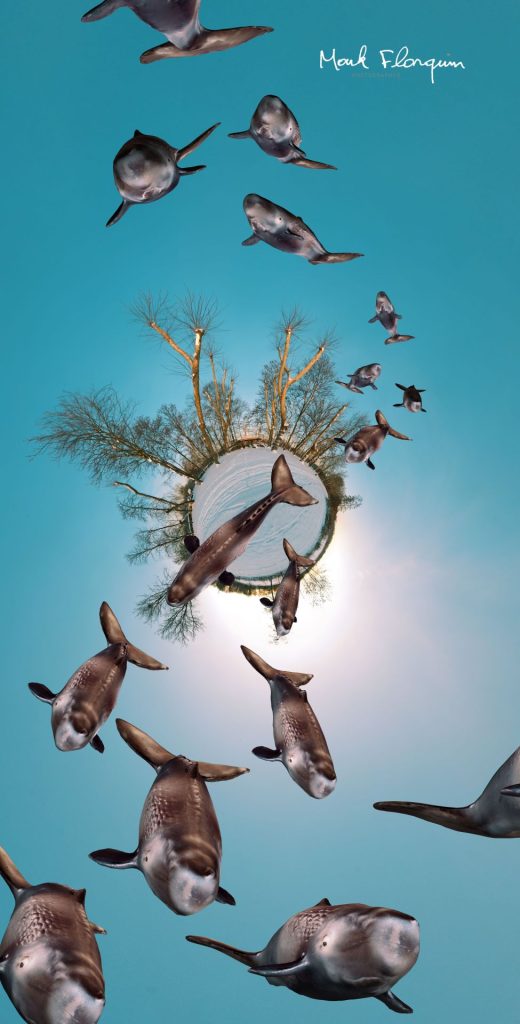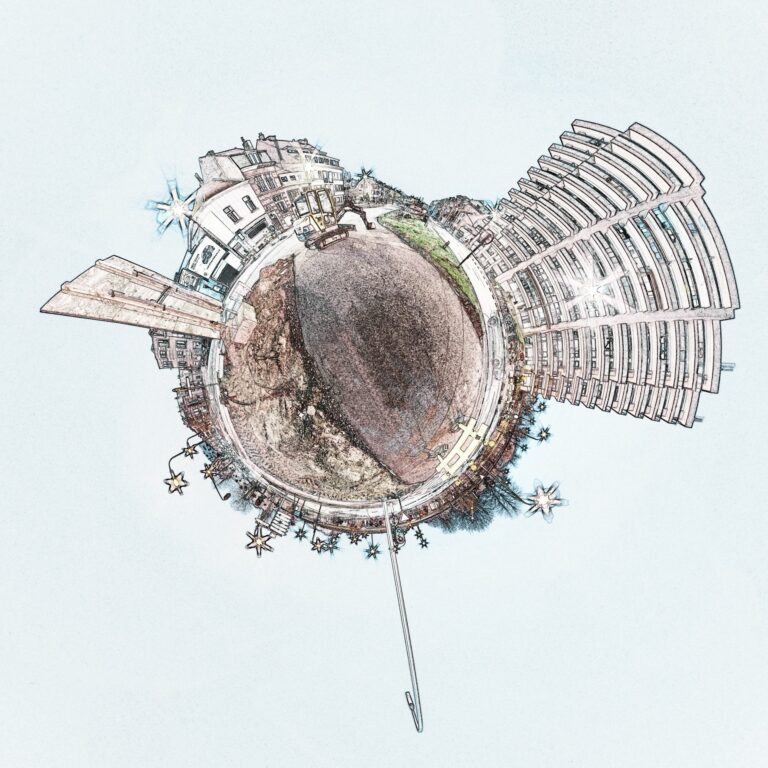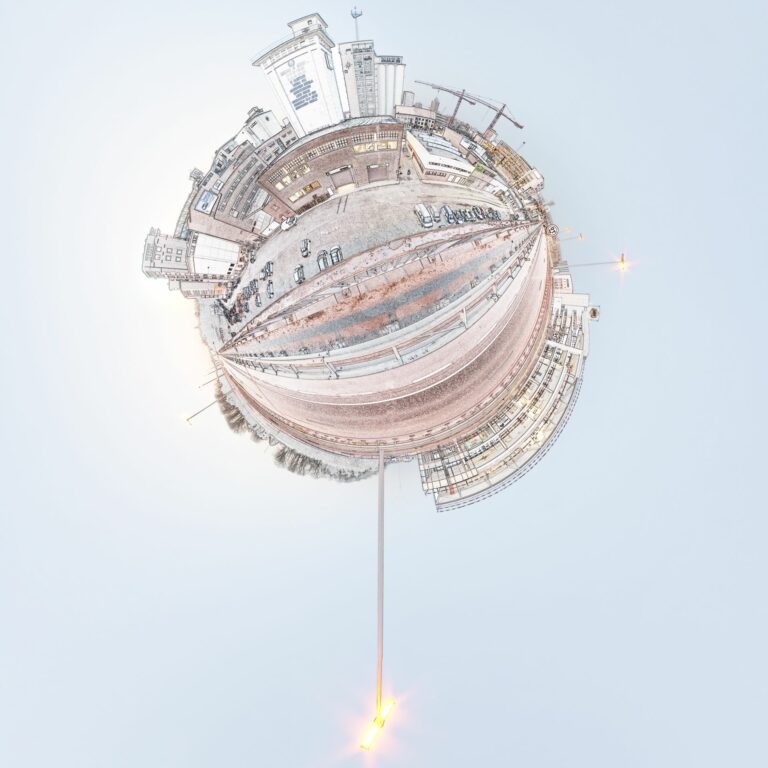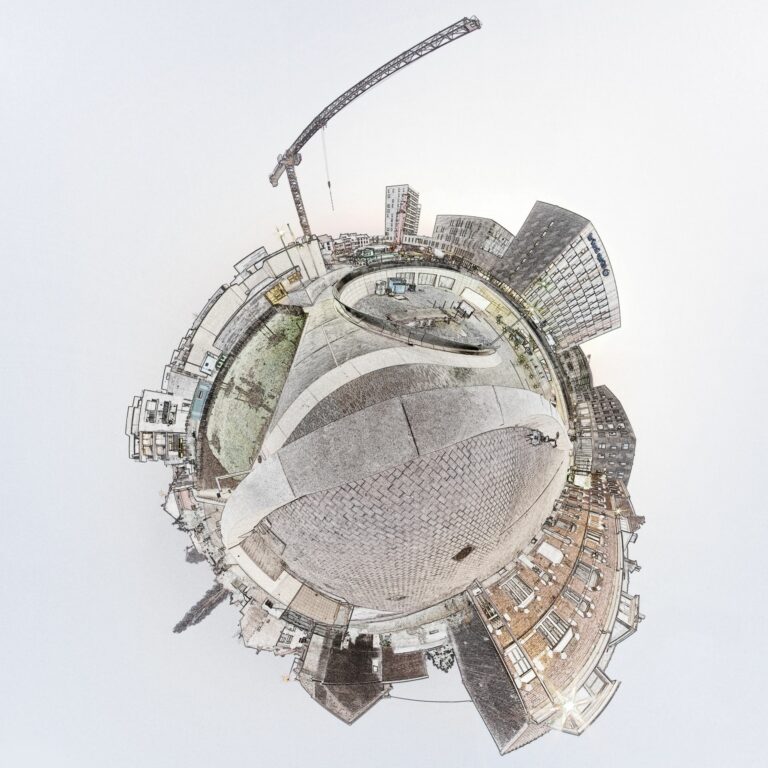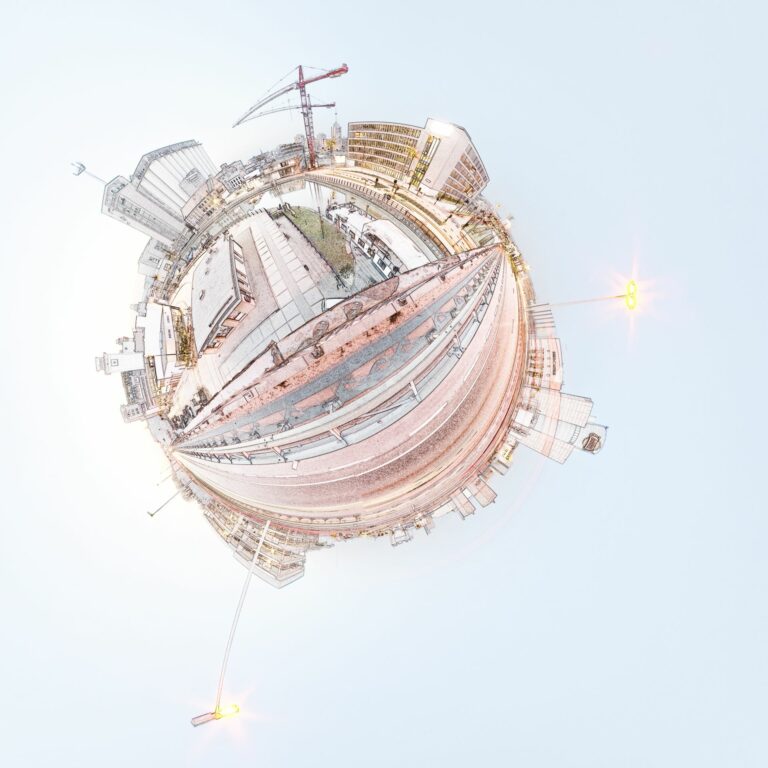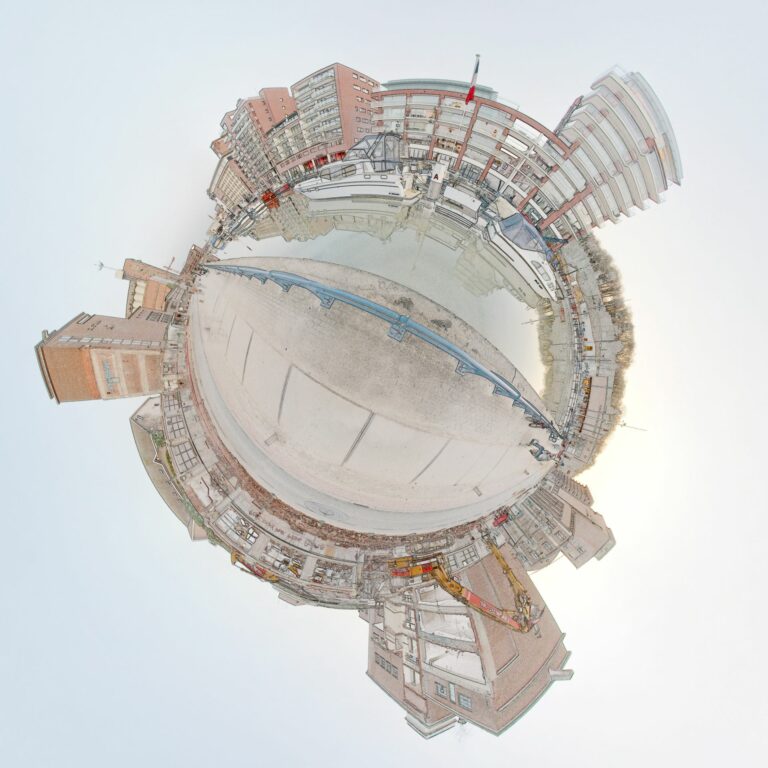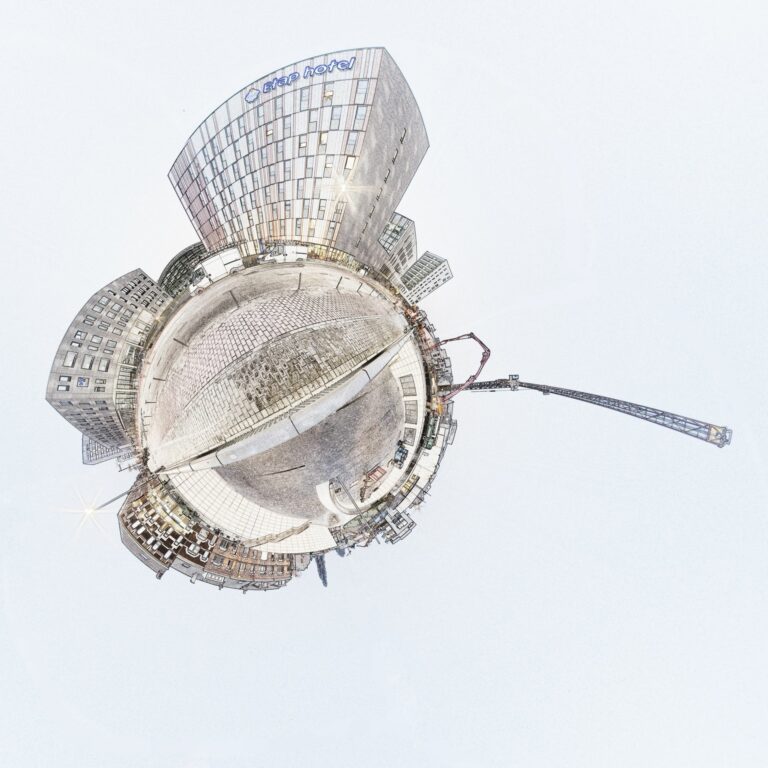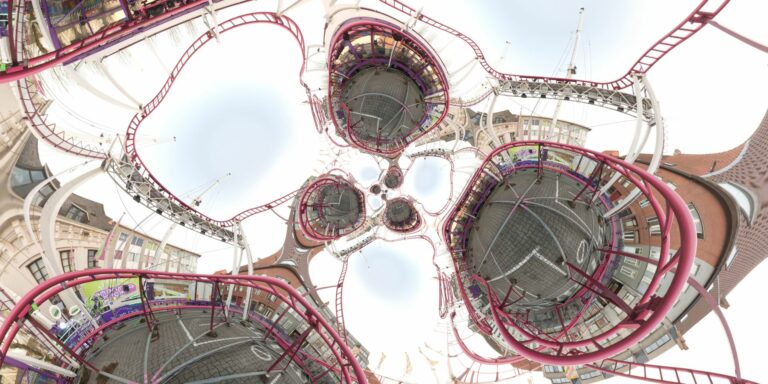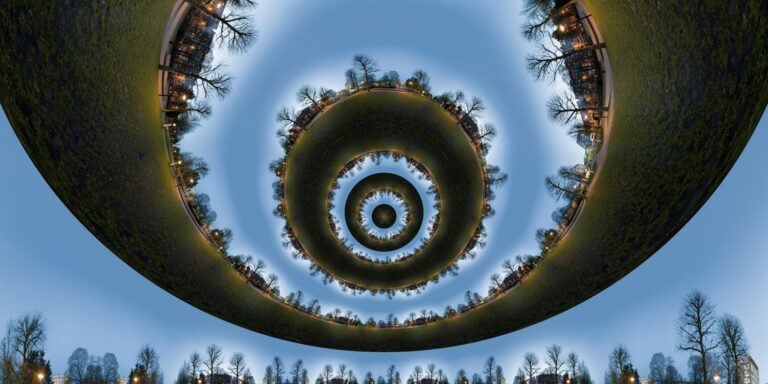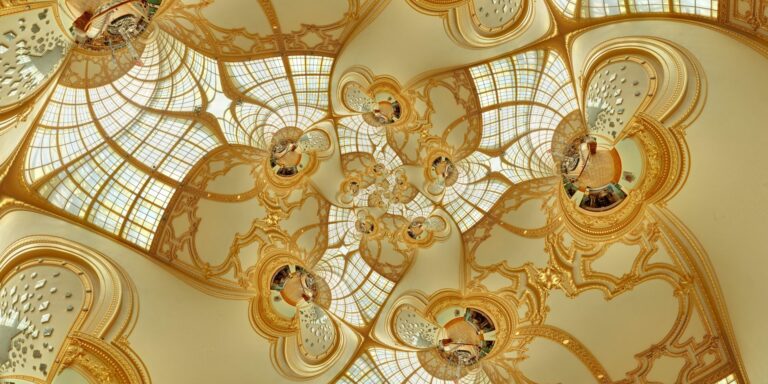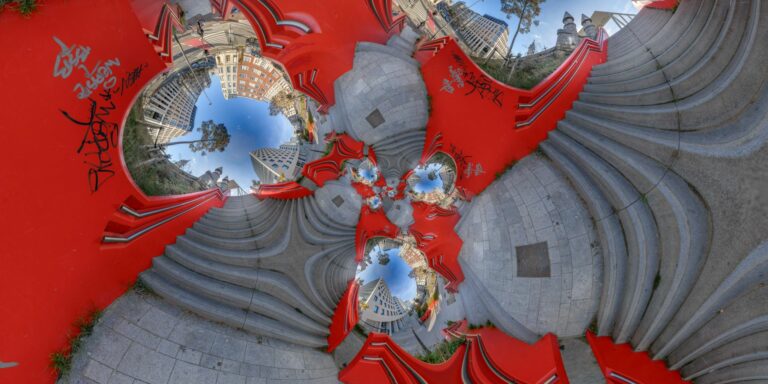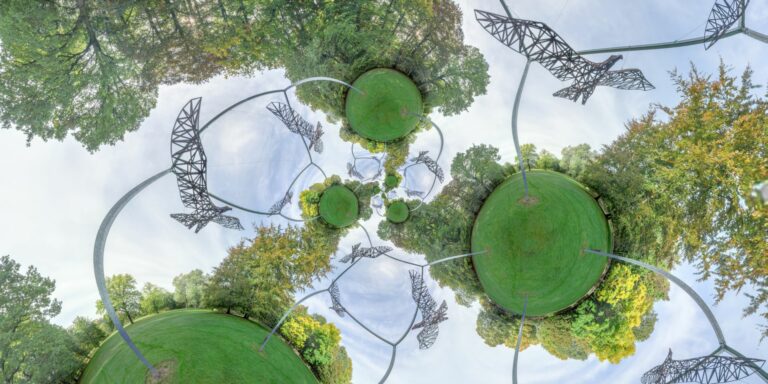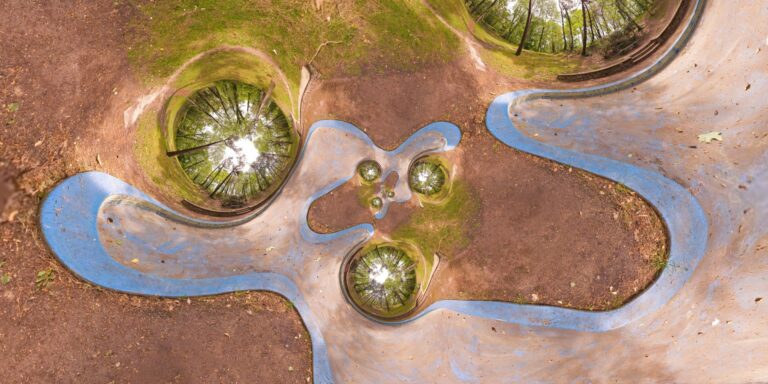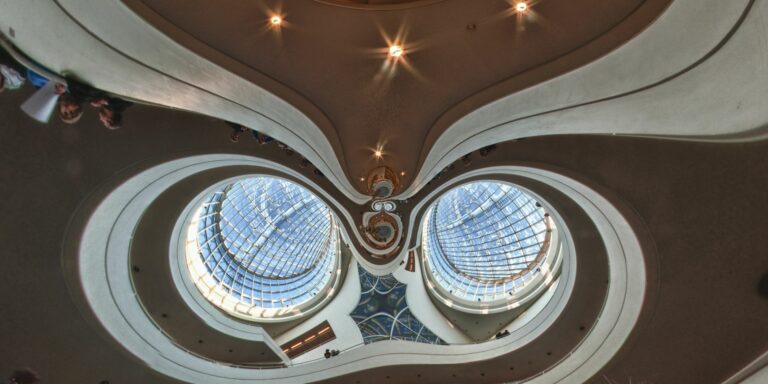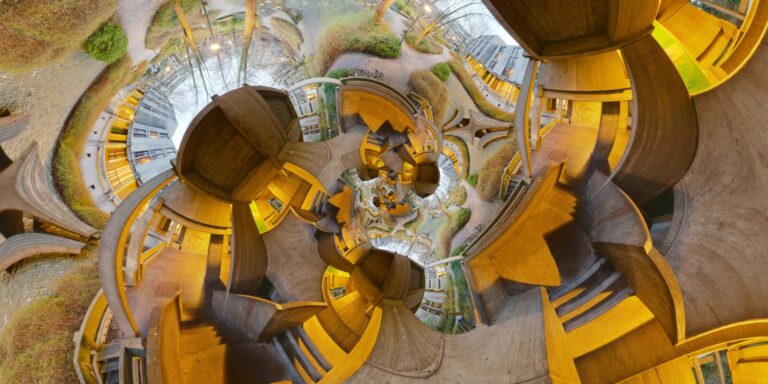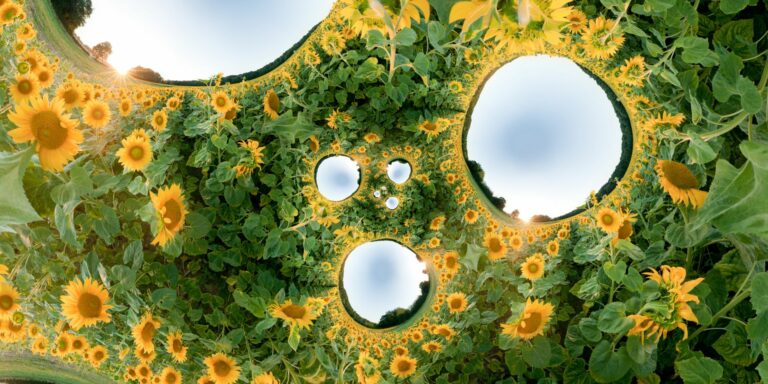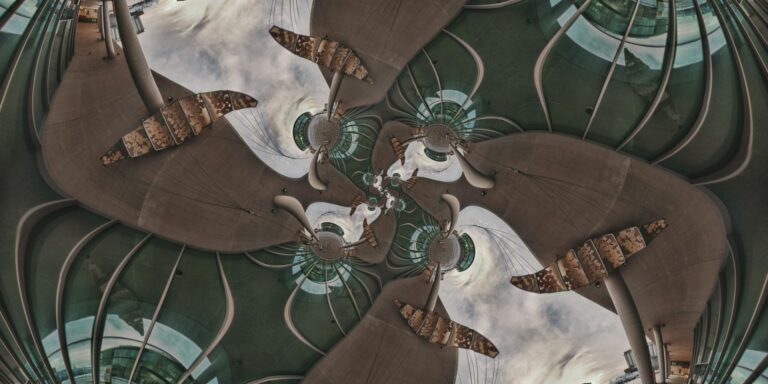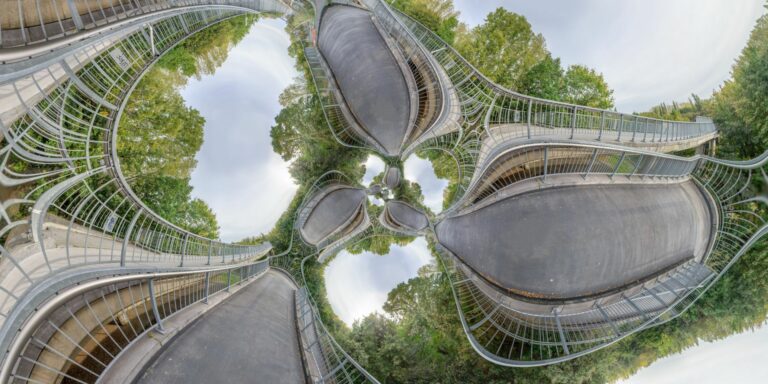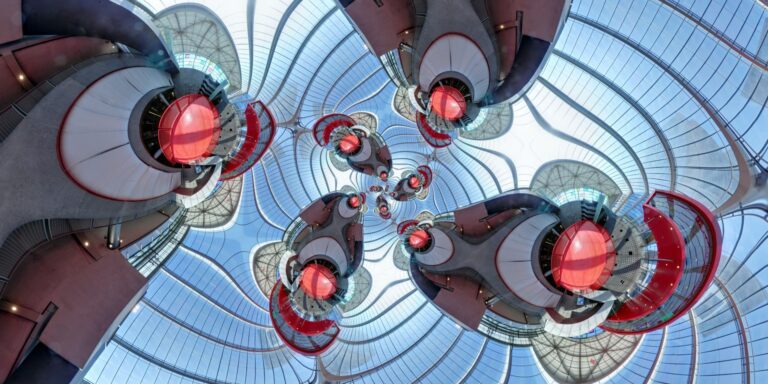iSphere (Isle of Sphere) photographs are made by rotating a camera around a single central point (Nodal Point). Once processed, a 360 image can be viewed in a panoramic viewer or further edited in what is known as “Little Planets”. In GIMP, I often used the Mathmap plugin in conjunction with a quincuncial projection script to make “Little universes”.
My interest in 360 Photography was awakened after a talk with Inigo Quilez. I spoke to him in a meeting about my combined images. I always had to bring a model or object to the scene in order to get the right light and shadows. It was all possible thanks to Photoshop, but Inigo mentioned a smooth metallic sphere that one would photograph in any scene and then use the resulting image as a source of lighting on a 3D object. That opened my eyes and after research I discovered that the technique could be taken even further by creating a 360 Panoramic HDR image. I was eager to learn more and practice.
Quickly, however, capturing panorama’s began to lead a life of its own and I began taking my 360 equipment everywhere I went. To the beach, on holidays and trips. For a few years, it even became a part-time job. I discussed an exhibition, “Uit de Bol”, with Karin from Galerie K in Leuven, and I sold the piece on the left
Of course, I used the Panoramas as background scene illumination, as originally intended, but it clearly wasn’t the only goal anymore.
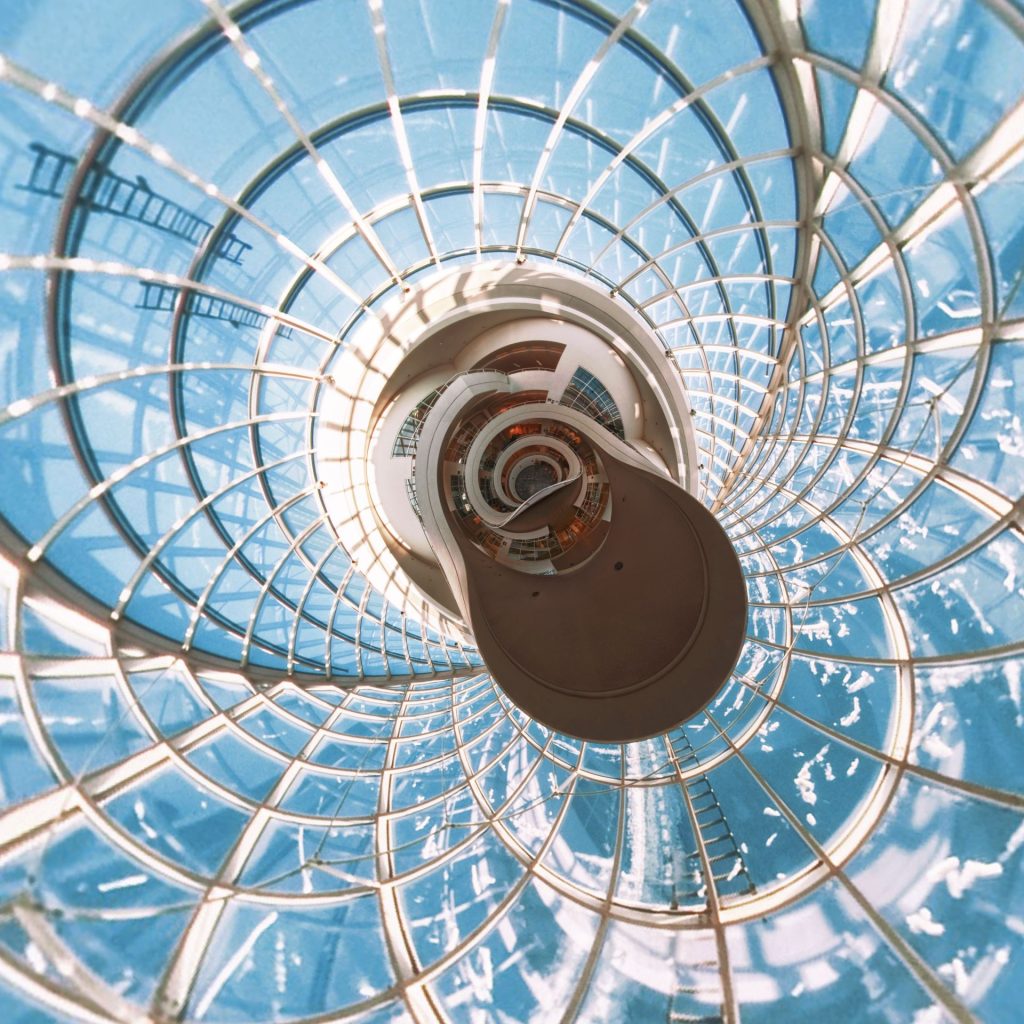
Thanks for checking out this Project, see you in the next!
Mark Florquin

